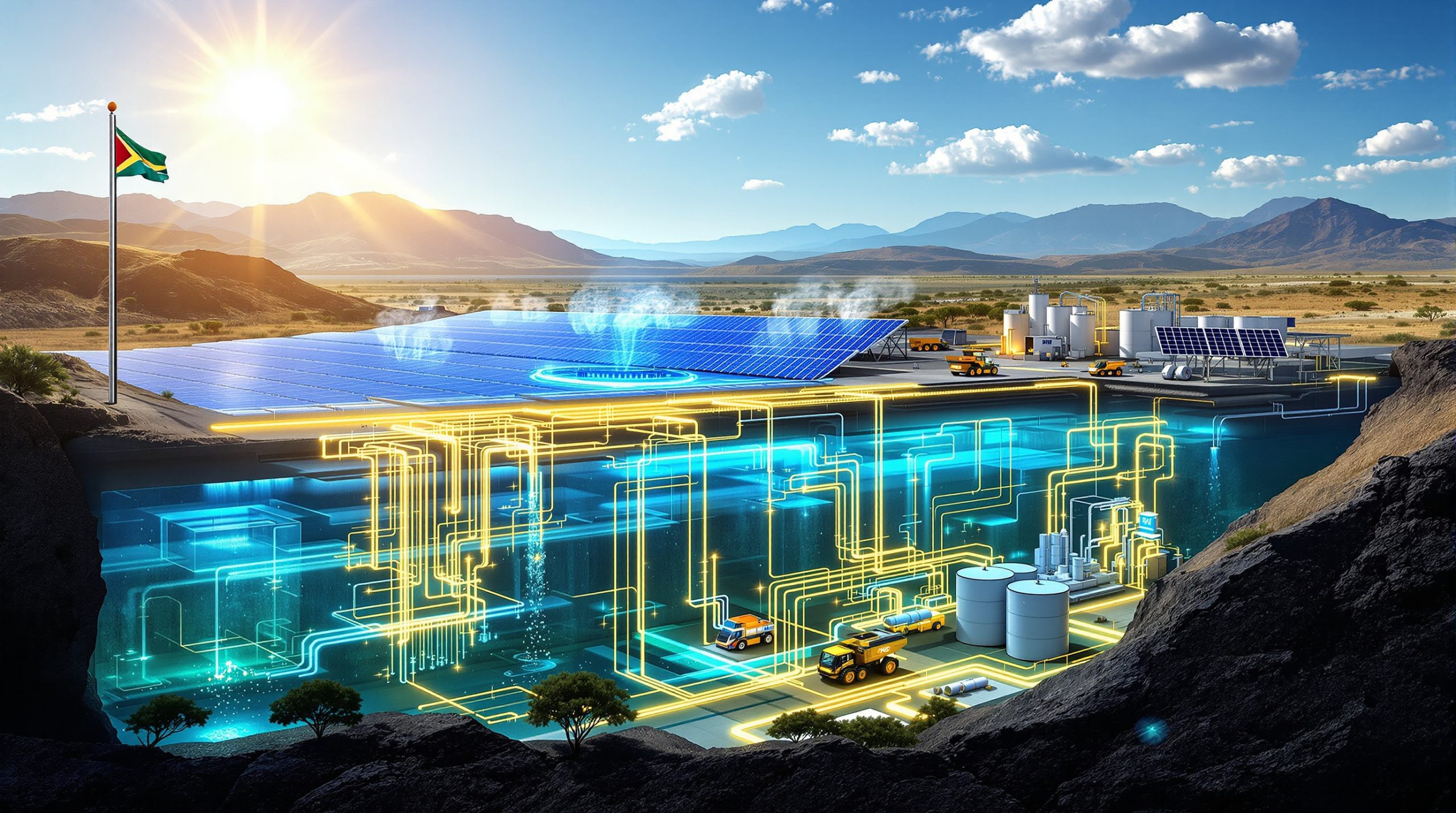Understanding Mining Energy Infrastructure Evolution
The mining industry faces unprecedented pressure to transform its operational frameworks, particularly regarding energy consumption and resource management. Traditional mining operations have historically relied on grid-dependent fossil fuel systems and freshwater extraction, creating sustainability challenges in an era of climate consciousness and resource scarcity. Modern platinum group metals operations are pioneering integrated infrastructure solutions that address both environmental concerns and operational efficiency requirements, with Platreef energy and water management serving as a prime example of innovative approaches.
Advanced mining projects now incorporate multiple energy sources, sophisticated water management systems, and community partnership models that extend far beyond conventional extraction methodologies. These developments represent a fundamental shift in how the industry approaches long-term viability and social license requirements.
Revolutionary Energy Architecture in Modern Mining Operations
Multi-Source Power Integration Systems
Contemporary mining energy strategies employ hybrid power configurations that combine renewable generation with conventional backup systems. This approach provides operational reliability while reducing carbon footprint through strategic energy source diversification.
On-site solar installations serve as primary renewable energy contributors, with photovoltaic systems scaled according to operational demands. These installations supplement grid supply during peak production periods and provide backup power during grid instabilities. Battery-powered underground equipment fleets further enhance energy efficiency by eliminating diesel exhaust concerns in confined spaces.
The integration of liquefied natural gas systems offers transitional benefits, delivering approximately 50% carbon emission reductions compared to traditional coal-based power generation. Furthermore, these industry evolution trends demonstrate how hybrid approaches enable mining operations to maintain consistent power availability whilst progressively increasing renewable energy percentages over time.
Technical Specifications and Scalability Models
Modern mining energy infrastructure incorporates modular design principles that support phased expansion capabilities. Initial operational phases typically require 30 MW capacity for basic mining operations, with expansion potential reaching 100 MW for full-scale production phases.
Solar farm installations range from 5 MW initial capacity to much larger configurations depending on site conditions and operational requirements. These systems integrate with existing grid infrastructure while providing independent power generation capabilities during utility disruptions.
Underground mining equipment electrification represents a significant technological advancement, replacing diesel-powered machinery with electric alternatives. For instance, projects like the Platreef Development Project showcase how this transition improves air quality in underground environments whilst reducing fuel transportation requirements and associated costs.
Advanced Water Management Methodologies
Treated Wastewater Integration Frameworks
Water management systems in modern mining operations prioritise alternative water sources over traditional freshwater extraction. Treated municipal wastewater provides a sustainable water supply solution that reduces pressure on regional freshwater resources whilst supporting community infrastructure development.
Partnership agreements with municipal water treatment facilities enable mining operations to access 3 million to 9 million litres daily of treated wastewater, depending on operational phases and processing requirements. These agreements typically span multiple decades, providing long-term water security for mining operations.
The integration of treated wastewater requires specialised processing systems to meet mining operational standards. However, advanced treatment technologies ensure water quality meets specific requirements for mineral processing, equipment cooling, and dust suppression applications. This aspect of Platreef energy and water management demonstrates how innovative approaches can transform traditional resource utilisation.
Municipal Partnership Infrastructure Models
Public-private partnerships enable mining companies to invest in municipal water infrastructure improvements whilst securing long-term water supply agreements. These collaborations benefit both mining operations and surrounding communities through enhanced water treatment capabilities.
Investment in sewage treatment facility upgrades expands regional water treatment capacity whilst providing mining operations with reliable alternative water sources. These partnerships often include 32-year supply agreements that provide predictable operational costs and water availability.
Water quality monitoring systems ensure treated wastewater meets mining process requirements whilst maintaining environmental compliance standards. Consequently, real-time monitoring enables process adjustments and optimisation to maintain consistent water quality standards.
Operational Impact Assessment and Performance Metrics
Environmental Benefits and Resource Conservation
Alternative water sources and renewable energy integration deliver measurable environmental benefits that extend beyond immediate operational areas. Reduced freshwater consumption preserves regional water resources for agricultural and municipal use, particularly important in drought-prone regions.
Carbon footprint reduction through renewable energy integration contributes to broader climate change mitigation efforts whilst positioning mining operations as industry sustainability leaders. These improvements support regulatory compliance and enhance social licence maintenance. Furthermore, the implementation of sustainability transformation initiatives demonstrates how mining companies can achieve operational excellence whilst meeting environmental objectives.
Circular economy principles guide resource utilisation strategies, maximising value extraction from alternative inputs whilst minimising waste generation. This approach aligns with evolving environmental regulations and investor expectations regarding sustainable business practices.
Operational Continuity and Cost Management
Diversified energy and water sources provide operational resilience against external disruptions such as grid failures or drought conditions. This security enables continuous production schedules and predictable output levels for market supply commitments.
Long-term supply agreements for both energy and water resources enable accurate cost forecasting and budgeting for multi-decade mining operations. Fixed-price components in these agreements protect against commodity price volatility whilst ensuring resource availability.
Reduced transportation requirements for fuel and water delivery lower operational costs whilst decreasing environmental impact from logistics activities. In addition, on-site resource generation minimises supply chain dependencies and associated risks.
Industry Benchmarking and Comparative Analysis
Traditional vs. Sustainable Mining Operations
| Operational Aspect | Traditional Mining | Sustainable Mining | Key Differences |
|---|---|---|---|
| Energy Sources | Grid-dependent coal power | Renewable energy hybrid | 50% carbon reduction potential |
| Water Sources | Freshwater extraction | Treated wastewater integration | Regional resource conservation |
| Community Impact | Resource extraction focus | Infrastructure investment | Long-term partnership development |
| Cost Predictability | Variable utility costs | Long-term supply agreements | Enhanced financial planning |
Sustainable mining operations demonstrate superior performance across multiple operational metrics whilst providing enhanced community benefits and environmental stewardship. These advantages justify initial infrastructure investments through long-term operational savings and risk reduction.
Technology Leadership and Innovation Adoption
Early adoption of sustainable technologies positions mining companies as industry leaders whilst demonstrating feasibility for broader sector transformation. Successful implementations provide templates for similar projects in comparable operating environments.
Proven operational results from integrated sustainability systems encourage investor confidence and regulatory support for expansion projects. For instance, the success of the green iron project demonstrates how this credibility facilitates permit approvals and community acceptance for future development phases.
Investment Considerations and Strategic Planning
Financial Analysis Framework
Capital investment in sustainable infrastructure requires comprehensive financial analysis that considers long-term operational benefits alongside initial costs. Reduced operational expenses, regulatory compliance advantages, and enhanced market positioning justify significant upfront investments.
Environmental, social, and governance (ESG) investment criteria increasingly influence mining project financing and investor relations. Sustainable operational practices enhance access to capital markets whilst reducing financing costs through improved risk profiles. Moreover, understanding mining decarbonisation benefits helps investors appreciate the long-term value proposition.
Disclaimer: Mining investments involve significant risks including commodity price volatility, regulatory changes, and operational challenges. Investors should conduct thorough due diligence and consider professional advice before making investment decisions.
Risk Management and Future-Proofing Strategies
Climate change adaptation requires mining operations to anticipate evolving environmental conditions and regulatory requirements. Sustainable infrastructure provides resilience against water scarcity, carbon pricing mechanisms, and stricter environmental standards.
Technology evolution in renewable energy and water treatment systems enables continuous efficiency improvements and cost reductions over operational lifetimes. However, modular system designs facilitate equipment upgrades and capacity expansions as technologies advance.
Regional Impact and Community Development
Infrastructure Development Benefits
Mining investments in municipal water treatment facilities and renewable energy systems provide lasting benefits to surrounding communities. These improvements support regional economic development whilst enhancing quality of life for local residents.
Employment opportunities in renewable energy installation, maintenance, and operation create skilled job markets in rural areas. Furthermore, technology transfer and training programmes develop local technical capabilities that support broader economic diversification.
Social Licence and Community Relations
Sustainable operational practices demonstrate mining companies' commitment to responsible resource development and community partnership. Recent developments, such as Ramaphosa's acknowledgment of innovative approaches, highlight how these approaches enhance social licence maintenance whilst reducing operational conflicts and permit delays.
Community share ownership schemes and local procurement programmes ensure mining benefits extend beyond direct employment to broader economic participation. These initiatives build long-term stakeholder support for mining operations and expansion projects.
Future Technology Integration and Expansion Potential
Next-Generation Capabilities
Advanced battery storage systems enable greater renewable energy integration by storing excess solar generation for use during non-production periods. Smart grid optimisation systems automatically balance energy sources based on demand patterns and generation availability.
Enhanced water recycling technologies increase process water reuse rates whilst reducing overall water consumption. Carbon capture and utilisation systems may provide additional environmental benefits whilst generating revenue streams from captured emissions.
Adaptation to Changing Conditions
Mining operations must maintain flexibility to adapt to evolving environmental conditions, technological developments, and regulatory requirements. Modular infrastructure designs enable continuous optimisation and expansion without major operational disruptions.
Integration with regional sustainability initiatives creates opportunities for collaborative projects that multiply environmental benefits whilst sharing infrastructure costs. Consequently, incorporating energy transition strategies into these partnerships enhances operational resilience whilst supporting broader regional development goals.
The transformation of mining operations through sustainable energy and water management represents a fundamental shift in industry practices that benefits operators, communities, and environmental stewardship objectives. The success of Platreef energy and water management demonstrates that comprehensive planning, significant investment, and long-term commitment to operational excellence and community partnership are essential for achieving these transformational outcomes.
Are You Ready to Invest in Mining Companies Leading the Sustainability Revolution?
Discovery Alert's proprietary Discovery IQ model delivers real-time notifications on significant mining and exploration discoveries across the ASX, helping investors identify companies pioneering innovative approaches like advanced energy and water management systems. Start your 30-day free trial today and explore historic examples of major mineral discoveries to understand how early positioning in transformational mining projects can generate substantial returns.




